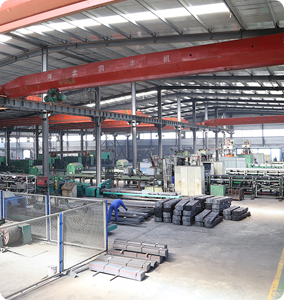The Role and Significance of Barbed Wire Fences
Barbed wire fences have become an iconic symbol of boundaries, protection, and even conflict in various contexts throughout history. Originally invented in the late 19th century, these fences were designed to provide an effective means of enclosing livestock and protecting crops. Today, their utility extends beyond agricultural uses, finding applications in military, security, and even historical contexts.
The invention of barbed wire is often attributed to Joseph Glidden, who patented his design in 1874. His innovation revolutionized fencing, making it more efficient and cost-effective compared to traditional wooden or stone walls. The twisted, sharp barbs of wire not only created a formidable barrier against animals but also contributed to the drastic transformation of the American landscape, particularly in the West. The introduction of barbed wire allowed settlers to stake their claims on the land, contributing to the era of westward expansion and the establishment of ranching as a dominant industry.
Barbed wire's utility is not limited to agriculture. Its use during World War I and World War II marked a significant shift in its application, showcasing its efficacy in military defense mechanisms. Soldiers would often construct barbed wire entanglements to slow down enemy advances, demonstrating its strategic importance on the battlefield. This wartime use also illustrated how barbed wire can symbolize tension and conflict, marking demarcation lines between hostile forces.
In modern times, barbed wire fences are equally pervasive. They are often used in prisons and military installations to deter escapees and intruders. The presence of barbed wire evokes a sense of fear and respect for boundaries, effectively communicating that certain areas are off-limits. Similarly, private properties and industrial sites utilize barbed wire to safeguard against trespassers and vandalism. In urban areas, barbed wire can sometimes be seen topping fences, serving as an additional layer of security.
barbed wire fences

However, barbed wire is not without its controversies. Its association with imprisonment and disenfranchisement gives it a dual identity—one of protection and another of exclusion. In various parts of the world, barbed wire fences symbolize oppression, particularly in regions marked by conflict or political unrest. The use of barbed wire in refugee camps, for instance, raises questions about human rights and the treatment of displaced individuals. It serves as a stark reminder of vulnerability and isolation in places where safety and freedom are compromised.
Moreover, the environmental impact of barbed wire fencing cannot be overlooked. In rural areas, wildlife often becomes vulnerable to entanglement in barbed wire, resulting in injury or death. Various organizations advocate for wildlife-friendly fencing solutions that mitigate these risks while still providing effective barriers for livestock.
Barbed wire also finds a place in art and literature, serving as a powerful metaphor for various themes, including confinement, division, and protection. Artists and writers have utilized its imagery to explore the complexities of human emotion and societal structures. Through these creative expressions, barbed wire transcends its physical form, stimulating discussions on broader themes such as identity, conflict, and resilience.
In conclusion, barbed wire fences represent a multifaceted subject that speaks to various aspects of human civilization, from agricultural innovation to the complexity of social issues. While providing practical benefits across numerous domains, barbed wire also evokes emotional and ethical considerations that challenge our understanding of boundaries—both literal and figurative. As we continue to navigate the intricacies of our interconnected world, the legacy of barbed wire will undoubtedly remain a poignant reminder of the ever-present tensions between protection, freedom, and the dichotomies that shape our lives.
-
Why Galvanized Trench Cover Steel Grating Resists Corrosion
NewsJul.10,2025
-
The Versatility and Strength of Stainless Expanded Metal Mesh
NewsJul.10,2025
-
Load Calculations in Steel Grating Platforms
NewsJul.10,2025
-
Keeping Pets and Kids Safe with Chicken Wire Deck Railing
NewsJul.10,2025
-
Hole Diameter and Pitch for Round Perforated Metal Sheets
NewsJul.10,2025
-
Aluminium Diamond Mesh in Modern Architecture
NewsJul.10,2025
Subscribe now!
Stay up to date with the latest on Fry Steeland industry news.

